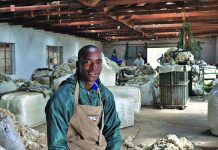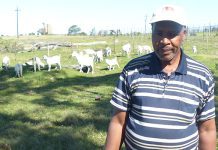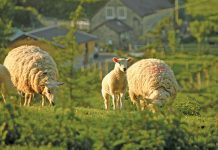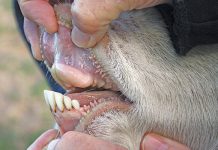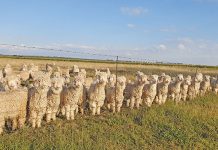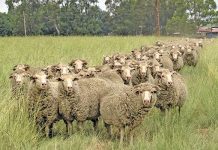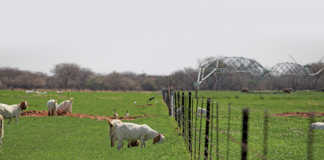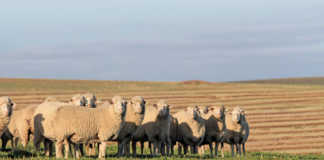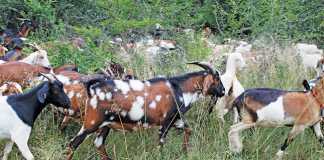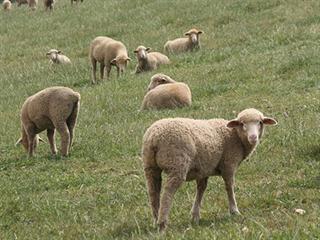
"The best wool, finest and strongest in fibre, is still produced in the area where thorough-bred Merino farming was first commenced in the west, comprising the coast lands east of the Hottentots Holland Mountains,” wrote William Spilhaus in the Official Handbook of the Cape of Good Hope, published in 1886.
It is a common misconception that experimentation with Merino farming in South Africa was started in the Overberg. But, while the story neither begins nor ends here, events that played out in the Overberg signalled the first steps towards establishing a commercial industry. Today it still forms the backbone of many farming businesses in South Africa.
Merino origins
Edmund H Burrows gives a detailed and definitive account of the history of Merino farming and wool production in South Africa in his book, Overberg Outspan: A Chronicle of People and Places in the South Western Districts of the Cape (1952).
He writes that in 1789, Colonel Robert Jacob Gordon, the commander of the Dutch forces at the Cape, received four ewes and two rams of ‘the Escurial breed of merino’, which were given to the Dutch government by the Spanish royal house. These six sheep were used for breeding at the Groenekloof experimental farm near Darling.
At the time, the King of Spain had
the sole right to export Merinos. But the sheep given to the Dutch royals could not adjust to the high rainfall in the Netherlands and were subsequently sent to Colonel Gordon, who realised the possibilities of this breed. During 1791, he received an official request from the Netherlands to return the Merinos because they should never have been sent to the Cape. Fortunately for the future of the South African Merino, he only returned the original number and kept the offspring.
However, a few years later, in 1795, when the Cape surrendered to the British, Colonel Gordon committed suicide and his widow sold off the fledgling Merino flock. Several of the sheep ended up on ships bound for Australia and became the ancestors of the wool sheep in Australia today. But three purebred rams were purchased by the Van Reenen brothers, friends of Colonel Gordon and amongst the most successful farmers of that time.
Vaderlandsskaap
The Van Reenen brothers bred these three rams to 300 Cape ewes. The Cape sheep or Kaapse skaap was a hardy, indigenous, fat-tailed breed with no fine wool qualities. It took the Van Reenen brothers five cross-breedings to produce pure wool, and Burrows writes that after that, wool quality started to improve rapidly. To differentiate it from the Kaapse skaap, the new crossbreed was named the Vaderlandsskaap.
It was distinguishable from the Kaapse skaap because it was a wool sheep, and was also heavier and less susceptible to diseases. Under British rule, the Commission for the Improvement of Stock-breeding and Agriculture was established, mainly to encourage the conversion of Cape sheep into wool bearing sheep.
Serving on the commission were Dirk Gysbert van Reenen (of the Van Reenen brothers) and Servaes van Breda, whose descendants would play a crucial role in the development of wool sheep farming in South Africa. The story takes a number of twists and turns, but ultimately, according to Burrows, “the true home of the (Merino) industry lies west of the Breede River, nine miles [14,4km] from Cape L’Agulhas, in the sandy duineveld of Bredasdorp”.
The farm Zoetendals Vallei, which to date has been in the Van Breda family for about two centuries was, Burrows writes, “the scene of one of the boldest agricultural experiments ever carried out in South Africa”. On this historic farm, Reitz and Van Breda set out to establish “the scientific validity of the Van Reenens’ experiment in cross-breeding the Cape sheep with Spanish rams to produce wool.”
The Reitz–Van Breda empire
In 1812, Jan Frederik was probably one of the most creative and successful entrepreneurs of his time. His business interests included farming, whaling and seal hunting, and he was granted 5 500 morgen (about 4 700ha) of land that was to become Zoetendals Vallei farm. Jan Frederik and Michiel were brothers-in-law, both having married Van Reenen women.
This may explain why they started breeding Merino sheep in a place that was, at the time, very much off the beaten track. Reitz started the business, but suffered ailing health almost from the outset, and in 1816 he offered Van Breda a share in the farm for 15 000 Cape gulden. Van Breda was the great grandson of Pieta van Breda who settled in the Cape during 1720. Pieta bought Oranje Zicht at the foot of Table Mountain from Governor Ryk Tulbach.
This property remained in the family for 170 years and it was here that Michiel was born and spent all his life. It is noted that Michiel used the farm for experimenting with different plant species and crops and also to propagate exotic plants from the Far East. He received his first official agricultural appointment when Governor John Cradock appointed him to his Board of Agriculture in 1812.
Michiel did not hesitate when offered the opportunity to farm in partnership with Reitz. Due to Reitz’s failing health and death in 1824, Michiel took charge of the farm almost immediately.
Family company
In a glowing account of Van Breda’s life and work, Burrows writes: “It is difficult to avoid superlatives when writing (of him)”, adding that he was a “leading Cape burger of his age”. After taking control of the farm, Van Breda founded a family company, Reitz, Breda and Joubert, which promoted Merino farming at Zoetendals Vallei for 35 years. It started in 1817 with 1 200 of the best ewes in the Cape colony at the time and a few Merino rams.
By 1830 the number had increased to over 5 000 sheep with an annual wool production of 10 000 pounds (4 500kg). The main aim was to improve wool through careful breeding. At the peak of its success, Van Breda steered the company to become one of the largest agricultural enterprises in the southern Cape with 30 farms covering 170 000 acres (almost 70 000ha).
Twenty seven rules
In 1817 he also started a diary, kept until his death in 1847, documenting the most important events and achievements of the farm. Van Breda, who was always based on Oranje Zicht, didn’t live and work on Zoetendals Vallei, but as an important part of his Merino farming legacy, he laid down 27 farming rules and principles according to which his foreman and workers had to manage the farm.
The most important was his clear instruction that the Merino sheep were to receive the greatest attention, because they were the main source of income. Burrows calls Van Breda’s “twenty seven articles of instruction’ a monument to his practical head” saying that when he handed over the reins 30 years later, Zoetendals Vallei was still being managed successfully according to these. Under ‘Article 2’, Van Breda wrote that if sheep developed Brandziekte (scab) the shepherds had to “wash them immediately with boiled tobacco water”.
Committed to paper
Some of the other farming rules included keeping to strict production cycles for shearing and lambing and “rams were to be put with the ewes on 15 September of each year”. According to Burrows, many of the principles described by Van Breda in the 27 articles probably already existed on all the more progressive Merino stud farms of the time, but Van Breda “was the first to commit them to paper”. He was also responsible for the novel idea of placing each flock under the protection of a particular specific shepherd.
From the Overberg to South Africa
Between 1823 and 1830 the Merino flock on Zoetendals Vallei grew from 3 000 to 5 560 sheep. According to Burrows, Van Breda wrote that “the increase in number does not account sufficiently for the increase in the quantity of wool”. By the early 1830s, the Merino breed was well established and ready to expand from the Cape to the rest of the country.
Burrows writes that the 1830s was a turning point for the South African wool industry with wool exports reaching 30 000 pounds (13 600kg). Twenty years later exports stood at nearly six million pounds per year (about 2,7 million kg), and in 1872 during the boom period, it reached 48 million pounds (about 21,8 million kg).
The careful breeding programme started by Robert Jacob Gordon, continued by the Van Reenens and scaled up to commercial importance by Retiz and Van Breda, had come to fruition. They proved that the local, fat-tailed, native sheep could be cross-bred into a good wool sheep and adapted the Merino to the country’s soil and climate.
“Now,” writes Burrows, “the great trek northwards commenced, as if the kraal gates of the Overberg had suddenly been opened wide …”
Van Breda’s contribution to the South African wool industry was not only limited to the production of good quality wool. He also sold breeding stock to other farmers at reasonable prices. This helped the small farmers in the area to get themselves started.
Later, even the Karoo farmers came to buy stock.
Between 1835 and 1840 when some 12 000 to 14 000 of the mainly Dutch-speaking colonists, many of them farmers, became Voortrekkers in The Great Trek from the Cape colony northwards, they took their sheep flocks with them. From here, the Merino breed spread to all parts of the country within a few years.
Modern Merino
Nowadays, economically viable Merino farming is practised virtually throughout the country. Merino South Africa, the representative body of all Merino farmers and stud breeders, founded in 1937, says Merino is by far the largest sheep breed in South Africa with about 13 million sheep and 2 500 farmers.
Through breeding, farmers have over the years adapted the sheep to market demands and environmental conditions. The change in the wool and meat price ratio over time, says Merino SA, necessitated changes in breeding for the most economically efficient type of Merino.
During his time as president of Merino SA from 2000 to 2005, John Stretton once remarked: “We now have Merinos which are bigger, plainer, hardier, more functionally efficient and more economically productive than ever before.”
Phone Merino SA on 049 892 4148, or visit www.merinosa.co.za for more information.

